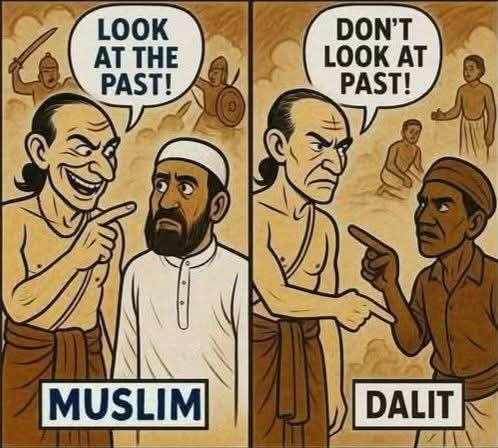The Trust Trap: How the People Closest to Us Fool Us the Most
In a world overflowing with information, misinformation, and outright deception, we’d like to believe that our inner circle — friends, family, and those who share our worldview — serves as a reliable shield against falsehoods. After all, these are the people we trust implicitly. Yet, paradoxically, it’s often these very individuals who fool us the most. Not necessarily through malicious intent, but because our defenses drop when information comes from familiar sources. We accept their words at face value, bypassing the critical thinking we reserve for outsiders. This blind spot isn’t just a personal quirk; it’s a cognitive vulnerability that permeates our relationships, politics, and society at large.
The Psychology of Unquestioned Trust
At the heart of this phenomenon lies a simple truth: we don’t question what aligns with our existing beliefs. When a friend shares a story that reinforces our views — whether it’s about a cultural tradition, a political scandal, or even a health tip — we let it slide through our mental filters unchallenged. Why? Because it feels right. It echoes our biases, providing that comforting sense of validation. Seeking a second opinion feels unnecessary, even disloyal. After all, if they’re like us, how could they be wrong?
Contrast this with how we respond to information from “the other side.” If someone with an opposing ideology or political leaning makes a claim, our skepticism kicks into overdrive. Driven by the innate human desire to be right (and to prove them wrong), we dig deep — scouring articles, fact-checking sources, and dissecting arguments until we find even a shred of evidence to dismiss it. This selective scrutiny creates an imbalance: we’re hyper-vigilant against external threats but blind to internal ones.
This dynamic plays out vividly in personal relationships. Friends and family, sharing similar values and backgrounds, become unwitting carriers of misinformation. A relative might pass along a family myth or a biased anecdote without verification, and we absorb it as gospel. Over time, these unchallenged narratives shape our worldview, entrenching biases we might otherwise question.
The Political Echo Chamber: Fooled by Our Own Side
Nowhere is this trust trap more evident than in politics. Supporters of a particular party or ideology are most susceptible to deception from within their own ranks. Right-wing individuals, for instance, often get fooled by right-wing sources precisely because those narratives bolster their preconceptions. False claims about immigration, economic policies, or cultural threats circulate freely in these circles, unchecked by criticism. Why bother fact-checking when it feels so affirming?
Meanwhile, the same people will scrutinize left-wing information relentlessly. Every statement from the opposing side is dissected, often until a minor inconsistency allows for outright dismissal. This isn’t unique to one side; it’s a universal bias. Left-leaning individuals fall prey to their own echo chambers just as easily. The result? Polarization deepens, and truth becomes secondary to tribal loyalty.
In India, this issue is amplified by the country’s diverse social fabric. Many live in self-imposed bubbles — offline and online — surrounded by people who mirror their religious, caste, or gender identities. Hindus in predominantly Hindu circles rarely engage with Muslim perspectives, leading to unchecked stereotypes and Islamophobia. Conversely, those immersed in Muslim communities might develop Hinduphobic views without exposure to counter-narratives. Upper-caste groups, insulated from lower-caste experiences, perpetuate casteist attitudes, while male-dominated friend circles foster resistance to feminism.
Social media exacerbates this. Algorithms feed us content that aligns with our likes, creating digital silos where diverse voices are algorithmically excluded. The more time we spend in these bubbles, the harder it becomes to escape. Obnoxious, narrow-minded views thrive in isolation, unchallenged and self-reinforcing.
Breaking Free: The Power of Diversification
The antidote to this deception isn’t cynicism toward those we trust — it’s a deliberate pursuit of diversity. Just as diversification in investing spreads risk and yields better returns, applying it to our social and informational diets builds resilience against bias. This means actively seeking opinions that differ from our own, even when it’s uncomfortable.
Cognitive dissonance — the mental discomfort of holding conflicting ideas — will arise, but it’s a necessary growing pain. Start small: If your network is mostly Hindu, befriend Muslims and listen to their stories. Upper-caste individuals should connect with those from lower castes to understand systemic inequalities. Men in male-heavy circles ought to engage with women to grasp feminist perspectives. And vice versa — the principle applies universally.
In politics, follow sources from across the spectrum. Read critiques of your favorite party; they might reveal blind spots you didn’t know existed. Offline, step out of homogeneous groups: attend interfaith events, join mixed-caste discussions, or participate in gender-diverse forums. Online, curate your feed to include opposing viewpoints rather than muting them.
This isn’t about abandoning your beliefs but enriching them. By exposing ourselves to “the other,” we sharpen our critical thinking, reduce susceptibility to deception, and foster empathy. In a divided world, especially in multicultural societies like India, this diversification isn’t just wise — it’s essential for personal growth and societal harmony.
Stepping Out of the Bubble
Ultimately, the people we trust fool us not because they’re inherently untrustworthy, but because we let them. Our biases create the perfect environment for unchallenged ideas to flourish. Recognizing this is the first step toward liberation. The next is action: break the cycle of narrow-mindedness by embracing discomfort and seeking diverse perspectives.
In doing so, we don’t just avoid being fooled — we become wiser, more compassionate versions of ourselves. After all, true wisdom isn’t found in echo chambers; it’s forged in the friction of differing worlds. So, reach out, listen, and question — even those you hold dear. Your mind, and your relationships, will thank you.
